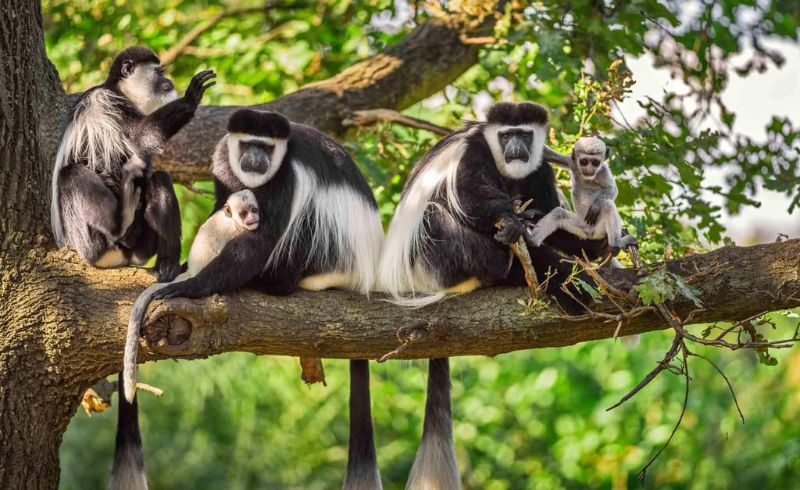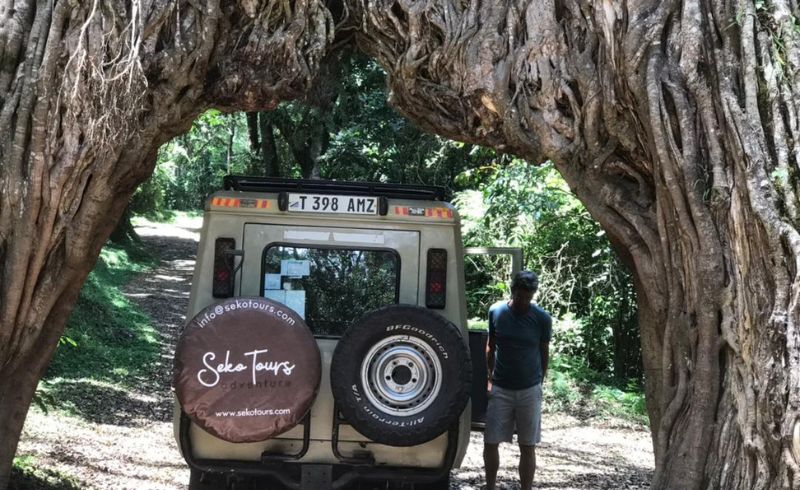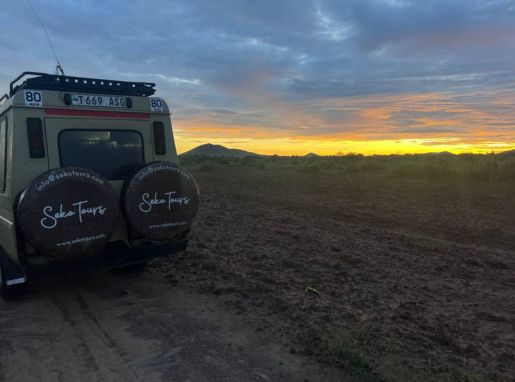Arusha National Park
Arusha National Park: A Comprehensive Guide to Tanzania’s Hidden Gem
Arusha National Park, located in northern Tanzania, is a small yet diverse national park that offers visitors a chance to explore some of East Africa’s most stunning landscapes. From lush rainforests to the striking peaks of Mount Meru, Arusha National Park is a haven for nature enthusiasts and wildlife lovers. The park’s proximity to the safari capital of Arusha makes it an ideal destination for day trips or as the starting point for a broader Tanzanian adventure.
Why Visit Arusha National Park?
Arusha National Park is perfect for travelers seeking a unique safari experience. It is a haven of tranquility, offering a break from the bustling city life and an opportunity to immerse yourself in unspoiled nature. With its diverse ecosystems and activities, the park caters to all types of visitors, from adventure seekers to families and couples looking for a romantic getaway.
Highlights
- Walking Safaris
- Canoe Trip
- Mount Meru climb
- Stay in ultra-luxury accommodation or mobile tented camps
- Sensational game viewing and safari activities, including night drives












Geography and Landscape of Arusha National Park
Arusha National Park covers approximately 137 square kilometers and features three distinct areas: the lush forests of Mount Meru, the Ngurdoto Crater, and the Momella Lakes. Each region offers unique landscapes and activities, showcasing Tanzania’s natural beauty in different ways.
Mount Meru: A Trekker’s Paradise
Mount Meru, the second-highest peak in Tanzania, serves as a stunning backdrop to Arusha National Park. Its slopes are blanketed with dense rainforest, home to wildlife like colobus monkeys and vibrant bird species. Trekking Mount Meru is a popular activity, offering breathtaking views of the surrounding landscapes and even glimpses of Mount Kilimanjaro on clear days.
The trek to Mount Meru’s summit is both challenging and rewarding. Typically completed in three to four days, it’s an excellent acclimatization opportunity for those planning to climb Kilimanjaro. Trekkers traverse diverse vegetation zones, from lush montane forest to the stark beauty of alpine desert.
Learn More about Mount Meru
Ngurdoto Crater: Tanzania’s Mini Ngorongoro
Ngurdoto Crater, often called “Little Ngorongoro,” is a swampy caldera teeming with wildlife such as buffalo, warthogs, and a range of bird species. While descending into the crater isn’t permitted, the rim’s viewing points provide excellent opportunities for photography and wildlife observation. The crater’s lush environment is a reminder of the richness of Tanzania’s natural habitats.
Visitors can explore the Ngurdoto Forest, a dense woodland area that is home to monkeys, bushbucks, and elephants. The forest provides a different perspective on the park’s ecosystem and is a great spot for nature walks.
Learn More about Ngurdoto Crater
Momella Lakes: A Bird Watcher’s Haven
The Momella Lakes, a series of alkaline lakes, are famous for their vibrant flamingo populations. These lakes also attract other waterfowl and wading birds, making them a paradise for bird enthusiasts. Canoeing on the lakes is a unique way to experience this part of the park, offering close encounters with aquatic birds and even hippos.
Each lake has its own unique color, ranging from shades of green to blue, due to the varying mineral content. The tranquil surroundings and abundant birdlife make the Momella Lakes a must-visit destination for photographers and nature lovers.
Learn More about Ngurdoto Crater
Wildlife in Arusha National Park
Mammals of Arusha National Park
While Arusha National Park doesn’t boast the Big Five, it is rich in wildlife and offers sightings of giraffes, zebras, antelopes, and monkeys. The park is also home to predators like leopards and hyenas, though they are less commonly seen. The diverse ecosystems within the park support a variety of species, making it a rewarding destination for wildlife enthusiasts.
One of the park’s highlights is the giraffe population, often described as the tallest in Tanzania. These gentle giants can be seen browsing in the open savannas and offer excellent photography opportunities.
Birds of Arusha National Park
Arusha National Park is a birding hotspot, with over 400 recorded species. Highlights include the silvery-cheeked hornbill, Narina trogon, and Hartlaub’s turaco. The park’s diverse habitats, from forest to lakes, support a variety of resident and migratory birds. During the wet season, migratory birds from Europe and Asia enhance the park’s avian diversity.
For avid bird watchers, the park’s trails and lakesides are ideal locations for spotting rare species. Binoculars are a must to fully appreciate the park’s birdlife.
Map of Arusha National Park


Interesting Facts about Arusha National Park
How to Get to Arusha National Park
Located just a short drive from Arusha Town lies the national park with the same name. Arusha National Park is the most accessible national park of the Northern Circuit in Tanzania and the perfect place for a day trip or as the first or last stop on a longer itinerary. At just 552 square kilometers, Arusha NP is a small park with a lot to see.
Arusha National Park is divided between three districts: Momella Lakes, Mount Meru, and the Ngurdoto Crater. Depending on the time of year, you can spot thousands of flamingos at Momella Lakes, which migrate between Lake Manyara and here.
Within these districts, Arusha NP boasts a broad variety of landscapes, ranging from open savannah through acacia scrubland to rainforest and eventually to alpine conditions on the higher reaches of Mt. Meru.
With diverse wildlife that includes herbivores such as elephants, hippos, buffalo, zebra, and even the occasional wildebeest, Arusha National Park is also a perfect place to get out and stretch your legs – with both walking safaris and canoe safaris available within the park.
The National Park is also home to the world’s largest population of giraffes, making it a great place to visit for fans of these long-necked, beautiful animals.
Climate & Seasons
Arusha National Park usually has a pleasant and mild climate with fresh mornings and evenings, but nice and warm temperatures during the day. Due to the national park being at the foot of Mt Meru, the climate is highly influenced by the mountain, resulting in unpredictable weather and higher chances of rain near the slopes than in the surrounding areas.
The temperature differences can be quite drastic. It’s highly advised to bring a thick sweater for early morning safaris as the average temperature is around 10 degrees at nighttime. Daytime temperatures are usually around 20 degrees, depending on the time of year and elevation level
Arusha National Park Photography
Activities in Arusha National Park
Game Drives
Game drives in Arusha National Park allow visitors to explore its varied landscapes and spot a range of wildlife. The drives are shorter and less crowded compared to other parks, making for a more intimate experience. Guides often tailor game drives to visitors’ interests, ensuring a memorable experience.
Canoeing on Momella Lakes
Canoeing is a unique activity that sets Arusha National Park apart from other Tanzanian destinations. Glide through the calm waters of Momella Lakes, surrounded by stunning scenery and the calls of birds. Canoeing tours are led by experienced guides who share insights about the lake’s ecosystem and its inhabitants.
Learn More about Canoeing on Momella Lakes
Guided Walks and Hiking
One of the most appealing aspects of Arusha National Park is the opportunity to explore on foot. Guided walks take you closer to nature, offering encounters with wildlife and insights into the park’s ecosystems. Trekking Mount Meru is a must for adventurers.
Shorter hikes around the park provide a more relaxed experience while still allowing visitors to appreciate its natural beauty. Walking safaris are particularly popular, as they offer a different perspective compared to vehicle-based tours.
Picnicking and Relaxation
Arusha National Park features several designated picnic spots where visitors can relax and enjoy the serene environment. These areas provide panoramic views of the park’s landscapes and are perfect for unwinding after a day of exploration.
Best Time to Visit Arusha National Park
The park is a year-round destination, but the best time to visit depends on your interests:
Dry Season (June to October)
Best for game viewing and trekking. The weather is cool, and animals are easier to spot.
Wet Season (November to May)
Ideal for bird watching and enjoying lush landscapes. The park is quieter during this time, offering a more serene experience.
During the wet season, the park’s flora comes alive, creating a lush and vibrant atmosphere. This period is also ideal for photography, as the scenery is particularly stunning.
Tips for Visiting Arusha National Park
Bring Binoculars: Essential for bird watching and spotting distant wildlife.
Wear Comfortable Clothing: Neutral-colored, lightweight clothing is ideal for safari activities.
Carry a Camera: The park’s stunning landscapes and wildlife make for excellent photography opportunities.
Stay Hydrated: Carry water bottles, especially during hikes and walks.
Listen to Your Guide: Expert guides enhance your experience with their knowledge and insights.
Plan Ahead: Booking accommodations and activities in advance ensures a smooth visit.
Feature Travel Tips
See Our Basic Tanzania Travel Info
Popular questions about Arusha National Park
Arusha National Park is in northern Tanzania, close to the town of Arusha. It is about 25 km from Arusha town and roughly 35 km from Kilimanjaro International Airport.
The park is known for its stunning landscapes, including Mount Meru, the Momella Lakes, and the Ngurdoto Crater. It is also home to unique wildlife, such as colobus monkeys, giraffes, and a variety of bird species.
No, Arusha National Park is not a Big Five destination. However, you can see giraffes, buffaloes, zebras, monkeys, and a rich variety of birds.
Visitors can enjoy activities like game drives, walking safaris, birdwatching, canoeing on Momella Lakes, and climbing Mount Meru.
Yes, the park is perfect for a day trip due to its proximity to Arusha town and its manageable size.
The park can be visited year-round. The dry season (June to October) is great for wildlife viewing, while the wet season (November to May) offers lush scenery and excellent birdwatching.
Climbing Mount Meru is considered challenging but rewarding. It’s a good option for acclimatization before attempting Mount Kilimanjaro.
Yes, guided tours are available and recommended, especially for walking safaris and canoeing activities.
Entrance fees vary depending on the visitor’s nationality. It’s best to check the Tanzania National Parks (TANAPA) website for the latest rates.
Yes, the park is family-friendly, offering safe activities like game drives and short walking safaris suitable for children.
Absolutely! Arusha National Park is often combined with safaris to Serengeti, Ngorongoro Crater, and Tarangire National Park.
We use 4x4 safari vehicles with pop-up roofs for excellent wildlife viewing and photography. They are spacious and well-maintained.
Most visitors need a visa to enter Tanzania. You can get it online or upon arrival. We’re happy to assist with any questions.
Yellow fever vaccination is required if you’re arriving from a country with a risk of yellow fever. Malaria precautions are also recommended. Consult your doctor for advice.
It’s best to book 6-12 months in advance, especially during the peak season, to secure your preferred itinerary and accommodation.
Yes, on a clear day, you can enjoy breathtaking views of Mount Kilimanjaro from Arusha National Park, especially from higher altitudes on Mount Meru.
If your question is not listed, please contact us from here.

